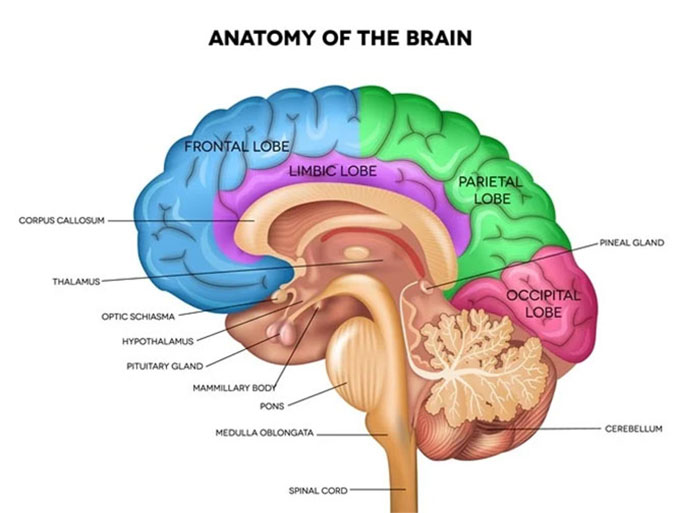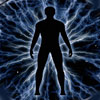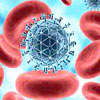The Riddle Of Aging
 by Leon J. Ricks
by Leon J. Ricks
One of the most baffling mysteries of modern science is the question of why a living organism ages. According to all scientific observation and deduction it cannot happen — yet it does. When an independent section of tissue is maintained in the proper laboratory environment its cells continue to divide and aging does not occur. But tissue which is part of a living organism begins to age once full growth, as specified by the heredity-carrying genes, is reached.
If the answer to this riddle could be found youth and experience could be combined. Leadership would be improved. Old maids would be a thing of the past. The frustrating “over-40 employment problem” would be gone. The degenerative diseases (heart disease, cancer, etc.) would be largely eliminated. Women would retain their full beauty for a reasonable time instead of starting to lose it almost as soon as they get it.
From infancy to old age cells are dying from inevitable environmental irregularities (poisons, stresses, uneven oxygen distribution, etc.) and other cells are dividing to form replacements. During the growth period the dying cells are largely replaced and, moreover, the cell-building processes are able to keep up with rapid body growth, but after maturity is reached cell replacement mysteriously decreases and the rate of cell deaths (necrocytosis) increases.
I have been interested in the aging riddle since reading about some Russian rejuvenation experiments. Leading scientists now say it may be possible some day to control aging. I was struck by an exciting idea one day: Perhaps the subtle aging process, believed by many scientists to be closely related to the delicate nervous-endocrine system, would respond to the power of hypnosis! In 1958 I wrote to the University of California at the Los Angeles Medical Center and also to a prominent psychologist-hypnotist about my idea. It was new to them but they responded that it might work, although neither of them felt in a position to try it.
I decided that hypnotic aging control might be facilitated by a conscious knowledge of the aging mechanism and proceeded to read all I could find on aging in five libraries and to interview and query various hypnotists and scientists. Somebody suggested that I try to find a clairvoyant who might be able to shed some light on the aging mystery.
I wondered whether anybody had ever thought to ask Edgar Cayce about the cause of and the cure for the physical ailment called aging. His son, Hugh Lynn Cayce, wrote me that there is some information on aging in the Cayce files but that it is scattered among the 90,000 pages of transcripts and has not been put together. He knew of nobody in the entire world who might be able to answer my question. I decided to look for such a person anyway.
About six weeks later and 14 miles from my home my search ended. This was on December 2, 1958. In El Monte, Calif., I met a practitioner of psychology and hypnotism, William V. King, who claimed that he could give clairvoyant diagnosis and advice under hypnosis. He himself was curious about the aging riddle and consequently agreed to give me some readings on the question without charge.
Little did I realize what a big project lay ahead. During the first three months of 1959 King gave me five one-hour readings while under hypnosis. I put many questions to him. I tape recorded each reading and made typewritten transcripts. He spoke very rapidly and positively and did not seem to be influenced by any ideas contained in my questions. In fact, sometimes he emphatically declared these ideas to be wrong.
Although many points in these readings seem rather vague, hard to understand and even improbable, although crude similes and non-technical language were employed, the general picture of the aging mechanism which he gave me is to my mind more original and logical than anything I had previously read or worked out myself — this, despite the fact that King is not a biologist.
 Other theories of aging that I have studied seem more concerned with results than with causes and at least some of them apply mainly or only to certain portions of the organism. Many of them are chemical theories, as if chemistry itself can fully explain the basic causes of aging.
Other theories of aging that I have studied seem more concerned with results than with causes and at least some of them apply mainly or only to certain portions of the organism. Many of them are chemical theories, as if chemistry itself can fully explain the basic causes of aging.
Physics is more basic than chemistry and borders on the field of metaphysics. So the most basic cause of any biologic phenomena would seem to be biophysical, i.e., within the area of atomic or subatomic biology. Certain specialists may be irked by this statement but I am fortunate in being a layman and thus impartial.
I was told that man ages simply because he does not live right, or because he is led to expect that he will age, or because man’s collective soul development has not yet earned him the right to control aging. Instead of being given a lot of mystical gobbledegook, I was given, by William King, a biophysical theory of aging.
Environmental and psychological factors apparently do affect aging, but even an ideal configuration of these factors surely would not go very far in controlling the aging process, and the facts of animal life seem to indicate that there is an internal mechanism or cause for aging.
The King readings on aging imply that the mystery of life and the mystery of aging, two of the great scientific riddles of our world, are intimately related. They reveal, if they are correct, that it is the behavior of that unseen, undetected, unknown essence which differentiates living organic matter from dead organic matter, which insidiously turns a strong, spirited, young adult into a flaccid, lethargic, old person. Aging does not occur because of such superficial and localized phenomena as the gathering of cross-linked molecules in the body’s cells, the accumulation of toxic substances, and the decreasing permeability of connective tissue — contrary to what some scientists have suggested.
It appears to the writer that aging is caused by the behavior of the life factor because we know that aging involves an unaccountable loss of life by an increased number of cells and the baffling failure of nutrient materials to be converted into living matter in a sufficient amount to replace all of the dying cells. The nutrients, the chemical energy, and the gene patterns for sustaining youth are present, but the mysterious factor needed for the activation of life processes is not as much in evidence as it was during the earlier years.
William King, under hypnosis, called this factor which gives life to matter life energy or primal energy, using the phrase “irregular electrical impulses” in referring to it in the form it assumes to cause aging. He said that, in the aging process, the cells lose their ability to hold the life energy because the life energy acts so as to injure the individual cells. Very interestingly, the thing which gives life to matter also takes it away.
This explanation of the life factor and the age-producing factor were given by King after I asked him, “Exactly what do you mean by regular electrical impulses?”
He answered, “With age or the passing of time these impulses become less consistent. In early life, from the time of infancy, they start out basically in an even flow of energy or electrical current. With the passing of time this flow becomes irregular, secreting more energy but of shorter duration, consequently overcharging and burning out cells that it is supposed to supply with the life material.”
I then asked, “What are the purposes of these electrical impulses in the first place?”
He replied, “Now we are dealing not only with the process of aging, but we are dealing with the processes of life itself, for this energy that is produced is the activating force that determines living matter from non-living matter. This is the life itself of the organism.”
Earlier it was noted that artificially maintained, independent tissue can be kept from aging indefinitely. Since an organism ages evidently there are certain functional interrelationships between certain organs and/or systems which make the entire organism age. The King readings indicate that the brain, the organ most concerned with general body regulation and condition, and the adjacent pituitary gland which provides the stimulus for growth are both to blame. Please remember, the completion of growth coincides with the beginning of aging.
 According to the readings the life-giving energy or substance of the supporting and molding electrical fields which surround all living things (reported by Burr and Northrop of Yale in 1947) is drawn into the brain (mainly the mesencephalon) and distributed to the body through the nervous system. The pituitary gland plays a very important role in handling this life energy and the structural characteristics and condition of this endocrine gland and the condition of its growth hormone affect the smoothness with which the life energy is transmitted. The pituitary gland makes possible the entry and/or transmission of the life energy in the first place.
According to the readings the life-giving energy or substance of the supporting and molding electrical fields which surround all living things (reported by Burr and Northrop of Yale in 1947) is drawn into the brain (mainly the mesencephalon) and distributed to the body through the nervous system. The pituitary gland plays a very important role in handling this life energy and the structural characteristics and condition of this endocrine gland and the condition of its growth hormone affect the smoothness with which the life energy is transmitted. The pituitary gland makes possible the entry and/or transmission of the life energy in the first place.
During the growth period life energy is utilized both for the “activation” of new cells and for the maintenance of old cells. When growth is completed cell production necessarily declines drastically and much less life energy is utilized. At the same time the growth hormone is no longer needed by the body.
Now life energy is required for maintenance only, rather than for both growth and maintenance. More life energy now is handled by the pituitary gland than is used by the body and the excess “burns out” the cells of this gland and causes a change in the composition of the growth of the hormone. The hormone change apparently is caused by the change in the condition of the gland. The gland deterioration and hormone alteration cause the life energy to be transmitted to the body cells in separate bursts, spaced a minute fraction of a second apart. The transmission was smoother earlier.
Since total quantity of the energy remains the same the amount of energy reaching a cell during the period when an impulse is received is greater than it was during a like period of time when the transmission was smooth. These sudden and separate high energy bombardments damage the portion of the cells which holds and utilizes the life energy.
Consequently the rate of cell deaths (necrocytosis) increases and the conditions for the building of new protoplasm and for cell division (mitosis) become less favorable. The body no longer is able to replace all of the dying cells.
I asked King if the transmission of the life energy becomes more and more irregular as the aging effects accumulate. I rather expected an affirmative answer. But he replied in authoritative, emphatic tones, “No.” He said that senility increases because in each successive period of time the number of cells which need to be replaced becomes greater. In other words, during the first period after maturity only a portion of the dying cells are replaced. Only a portion of the dying cells are replaced during the next period. The cells not replaced during the second period are added to the cells not replaced during the first period, and so on. As cells are lost and not replaced organs gradually become less efficient and tissues sag.
I do not entertain the hope that any physiologist will step into a laboratory and immediately investigate the above explanation of why people grow old. Neither do I have much hope that any researcher in the field of geratology will spend time deductively investigating these ideas.
 As a consequence I myself decided to try to determine how much sense the ideas made.
As a consequence I myself decided to try to determine how much sense the ideas made.
The idea of an increased destructive force seems to fit in very well with certain considerations relating to wounds and the contour limits of the body. Wounds in an old person heal at a rate which involves a rate of cell production which would seem to be at least equal to the rate of cell division necessary to maintain permanent youth in uninjured tissues. Why, then, do people age — in view of the relatively low cell production necessary for enduring youth if a rate of cell production greater than this requirement occurs in the area of the wound of an old person?
Something which is absent in the area of a wound must be the cause of the reduced rate of cell regeneration characteristic of the mature organism. Perhaps this cause is provided by the contour limits of the body which are delineated by the genes.
When there is a wound — a gap unfilled with cells — the cells surrounding the gap are able to multiply very rapidly because of the lack of congestion or compression caused by the fact that the cells have not yet met and pressed against the invisible contour limit. However, the wound does heal less rapidly than it would in youth because of the increased destructive force and because of the surrounding senile tissue.
During the growing period the major destructive factor which exists after body growth is completed is largely absent and the contour limits at the same time have not been reached, so cell division is extremely rapid in both uninjured and wound areas. After growth is completed the congestion or compression caused by reaching the contour limits allows at least enough cell production for the replacement of all the cells which would die because of the cell degenerative factors (inevitable environmental irregularities, poisons, stresses, insufficient oxygen, etc.) which have existed since the beginning of the organism, but a major destructive factor largely peculiar to the adult period prevents a complete replacement of cells.
I have submitted this explanation involving life energy to numerous scientists. The general reaction was that science knows very little about the pituitary gland, brain, and nervous system and it would be hard to prove anything one way or the other. A U.C.L.A. scientist implied that the “experimental design” I set forth should be investigated by a physiologist. A leading geratology researcher at the Brookhaven National Laboratory wrote that “… I honestly feel that some parts of the idea are reasonable to suspect …”
The particular destructive force Mr. King described is something that would almost have to travel over the nerves, if his general explanation is anything like correct, and in this connection it seems extremely interesting that the posterior lobe and the mesencephalon of the brain are largely composed of masses of nerve fiber the functions of which are matters of great perplexity to scientists. Furthermore, a mysterious bundle of 50,000 nerve fibers called the infundibulum leads from the pituitary gland to the brain and one of the readings indicated that these nerve fibers are required because a large enough quantity of life energy to serve the entire body must pass over them.
The anterior lobe of the pituitary gland is considered the master chemical regulator or gland of the body and it might be that the two lobes of the pituitary gland represent a chemical-electrical inter-regulatory agency, subordinate to the brain in respect to growth and aging. The nervous-endocrine system is already thought by many scientists to hold the answer to the aging riddle, and perhaps the pituitary gland is a major point of coordination between the nervous system and the endocrine system. This would resolve the mystification of one writer of an anatomy text who reflected that, since the pituitary gland is regarded as a hormone agency, it seemed odd half of it is nerve fibers.
If the life energy theory of aging presented here turns out to be correct it will be a major victory for those who believe that the mind of man transcends matter and can exist apart from the physical body.
I hope the scientists will give this their attention soon.
Posted in Health, Other Topicswith comments disabled.





